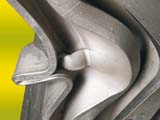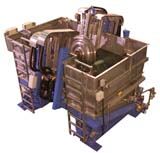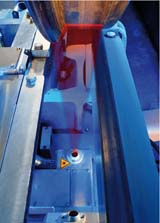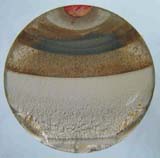The services offered by Fraunhofer Rail in rail vehicle development include measures for ensuring reliability and long service life, manufacture which consumes a minimum of time, money and resources, the improvement of safety, ergonomics and comfort for users of the vehicles, and reductions in emissions of noise and pollutants into the environment.
As regards the licensing of safety-relevant software in the rail sector, Fraunhofer Rail gives advice on the development of distributed and modular architectures, their validation and certification, and the improvement of development processes and drawing-up of safety documentation in compliance with EN 50128.
With comprehensive numerical and experimental procedures relating to component sizing and methods of materials characterization and component inspection, the safe, reliable and cost-effective operation of rail vehicles is guaranteed. Against this backdrop, the developers at Fraunhofer Rail have come to specialize in safety components and structures exposed to stress, such as vehicle bodies, bearings, brakes, wheels and wheel-set axles, and complete wheel sets.
The efficient manufacture of products is ensured by the simulation and optimization of steps in manufacturing, by their being automated and made more flexible, and by quality inspection technologies.
Modern methods of sound analysis, methods for the investigation of hygiene, interior climate and seat comfort, and crash analysis procedures are designed to ensure that passengers are both safe and satisfied. Innovative procedures for sound design, the development of acoustic components and usability engineering (e.g. facilities with which passengers can adjust their own seating comfort) enhance the competitiveness of the products.
 Fraunhofer-Allianz Verkehr
Fraunhofer-Allianz Verkehr


